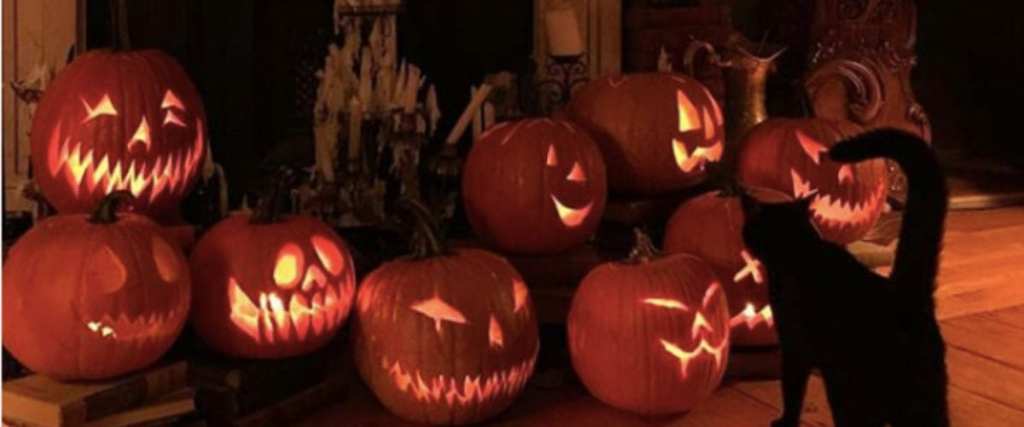Trending Now
It’s that lovely, cool, dark, spooky time of year again – Halloween is just around the corner. But even if you love the season and the day, there are probably at least a couple of traditions you participate on but aren’t sure why.
We’re looking to clear that up with some background and origins of 10 common Halloween traditions.
10. Carving Jack-O’-Lanterns
https://www.instagram.com/p/B3cVtcZgHDC/
Jack-O’-Lanterns originated in Ireland, though people there carved turnips instead of pumpkins. They’re based on a legend about one Stingy Jack, a man who trapped the Devil and then let him go – after he agreed never to drag Jack to Hell.
It turned out that Jack wasn’t good enough to go to Heaven, either, so instead he wandered the earth with a lump of burning coal inside a carved-out turnip to light his way.
Locals began the tradition of copying him in order to ward off evil spirits.
9. Bobbing for apples.
The game’s roots trace back to a Roman courting ritual that honored the goddess Pomona (agriculture and abundance). The idea was that young men and women could glimpse their future romantic life in the apples, and after the Romans conquered the British Isles, the tradition got mixed up in Samhain, a local festival that led to modern Halloween.
8. Seeing ghosts.
https://www.instagram.com/p/B3cVVtppZh-/
During Samhain, the Celtic festival that marked the transition between the end of the harvest season and winter, spirits were believed to walk the earth. The later introduction of All Souls Day (Nov 2.) by Christian missionaries further pushed the idea that the living and dead could mingle around this time of year.
7. Using black and orange to decorate.
During Samhain, black represented the death of summer, while the orange hailed the autumn harvest.
6. Wearing costumes.
https://www.instagram.com/p/B3cWR9YA3R8/
With all of the ghosts and spirits wandering around during Samhain (or All Souls Day), people decided they needed a way to avoid being terrorized. So they decided dressing up as something scary themselves seemed a good way to encourage spirits to leave them alone.
5. Candy corn.
Love it or hate it, candy corn seems here to stay – it was invented way back in the 1880s by the Wunderlee Candy Company of Philadelphia.
It was originally called Chicken Feed (“something worth crowing for”), but didn’t really catch on until trick-or-treating became a common U.S. practice in the 1950s.
4. Trick-or-treating.
https://www.instagram.com/p/B3cLRqXgg9d/
There’s a bunch of debate among historians over where exactly the practice of trick-or-treating came from, but here are the three most common theories.
- During Samhain, the Celts left out food for the wandering souls and ghosts once again trekking the mortal plain, and in time, people began to dress up as the ghouls in order to snag some delish food and drink.
- In Scotland, people practice guising (a secular version of souling), in which children and underprivileged adults went to local homes to collect food and money in return for prayers for the dead. In Scotland, guisers didn’t offer prayers, but instead performed jokes, songs, or other “tricks” for the people who opened their doors.
- Belsnickling is a German-American tradition where children dressed up and then challenged their neighbors to guess their disguise. If no one guessed correctly, the child was rewarded with food or other treats.
3. Eating candy.
Until the middle of the 20th century, children could receive many kinds of treats – anything from toys and coins to fruits and nuts might find their way into open palms. As trick-or-treating rose in popularity, though, candy companies smelled a marketing opportunity and began producing small, individually-wrapped candies.
The rest is history!
2. Avoiding black cats.
https://www.instagram.com/p/B3anB1TFMXe/
Black cats and their association with the spooky dates back to the Middle Ages, when they were considered to be a symbol of the Devil. That morphed into an association with witches a few centuries later, and black cats have really not managed to shake their link to dark magic, dark beings, and darkness in general to this very day.
1. Burning candles and bonfires.
Open flames were meant to light the way for souls making their way back to the afterlife – after all, if they couldn’t find their way, they might stay and haunt you all year long.
I can’t wait for the cooler weather to stick around for good!
What’s your favorite tradition? Is it on the list? Share in the comments!






